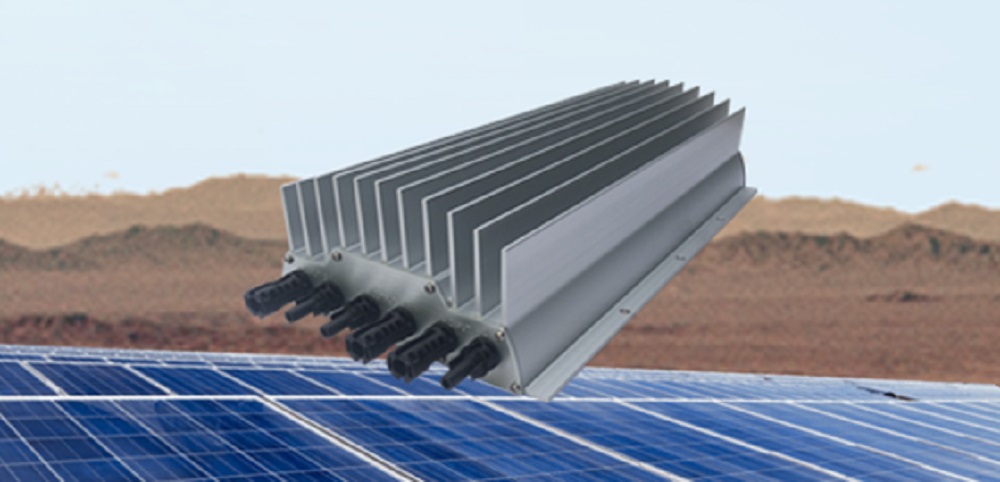From pv magazine USA
Ampt, a power electronic specialist based in Fort Collins, Colorado, has filed a lawsuit against SolarEdge for allegedly violating a series of their patents. According to Ampt, the violations at the heart of the issue are “power optimizers that contain high-efficiency power converters that both allow maximum power-point output, and use operational boundary conditions that continue producing power during conditions that might otherwise require the optimizer to be bypassed.”
The filing asks that the whole of SolarEdge’s inverter and optimizer lineup be removed from the marketplace for violation of these patents. Ampt contends that they, and other manufacturers, could replace SolarEdge’s hardware if needed.

Ampt filed with two separate courts – the Count of International Trade (ITC), whose online filing can be found here, and the US District Court of Delaware whole filing can be found here.
In the ITC Complaint filing, two patents were specifically highlighted – U.S. Patents Nos. 9,673,630 (‘630) and 11,289,917 (‘917).
The ’630 patent was issued in 2017, while the ’917 patent was recently awarded on March 29, 2022. Both patents claim priority to a provisional patent application filed in 2007. Ampt notes they were founded in Colorado in 2007.
The filing includes a circuit (below) that contains both a buck and boost converter. Ampt states that this “power optimizer circuit of (their) invention…describes a dual-mode configuration that provides high efficiency for their specific use-case.”

Buck converters step voltages down, while boost converters step voltages up. Solar optimizers regulate the voltages and amperages of individual solar panels in combination with their inverter, among a string of solar panels arranged in a series circuit.
The longer form filing with the ITC court includes an image of the circuitry inside of a SolarEdge optimizer, pointing out the location of the buck-boost converter.

The filing also highlighted operational boundaries and how they interact with over current and voltage, while attempting to optimize for the maximum power point (MPPT).
To this author’s very limited electrical knowledge, all inverter manufacturers use these two techniques to manage solar power. Solar charge controllers in off-grid systems specifically focus on these designs in order to keep voltages consistent when charging batteries from variable output solar panels.

It is not possible for pv magazine to check the correctness of patent claims and the arguments of the companies. For fairness, we gave SolarEdge the opportunity to respond, and they provided the following:
“SolarEdge and AMPT have been litigating a dispute involving a patent family filed by SolarEdge and a patent family filed by AMPT before the United States Patent and Trademark Office (USPTO) for many years. Recently, the USPTO awarded priority of invention to SolarEdge, cancelled the claims of AMPT’s patents, and awarded the patent claims in these AMPT patents to SolarEdge. It appears that having lost before the USPTO, AMPT is now shopping around its claims to other courts. SolarEdge anticipates a vigorous defense of these new cases.”
This content is protected by copyright and may not be reused. If you want to cooperate with us and would like to reuse some of our content, please contact: editors@pv-magazine.com.



Surprising that would be (thought) patentable.
I’ve got one of their inverters, I’ve had to replace it 3x now in a few years. I’m not sure I’d want to claim that tech lol.
Yep I’ve been waiting 2 months for my replacement inverter that quit after 32 months. Apparently mine lasted longer than most. A lot of upset SolarEdge Inverter customers out there – Check Trustpilot!
Issuing that patent for fig 5a is total horse crock.
It’s a time served H bridge commutator.
How in God’s name did this get approval by USPTO.
Smells fishy to me.
This is patent trolling. Will they try to patent the wheel next?
The wheel has been “patented”. Infringement claim expected.
See here
https://www.newscientist.com/article/dn965-wheel-patented-in-australia/
and here
https://www.digitaljournal.com/tech-science/australian-lawyer-patents-wheel/article/32988
“It’s a time served H bridge commutator.”
You are absolutely correct. If patents are granted to such basic circuitry, without any even remote hint/effort of an invention, when do we see patents on the use of resistors, capacitors, copper wires etc?
4 switch buck boost converter technology was available from Linear Technology (now part of Analog Devices) long before 2017, so don’t shout too loud about your patent being infringed. Suggested applications include energy harvesting from solar cells.